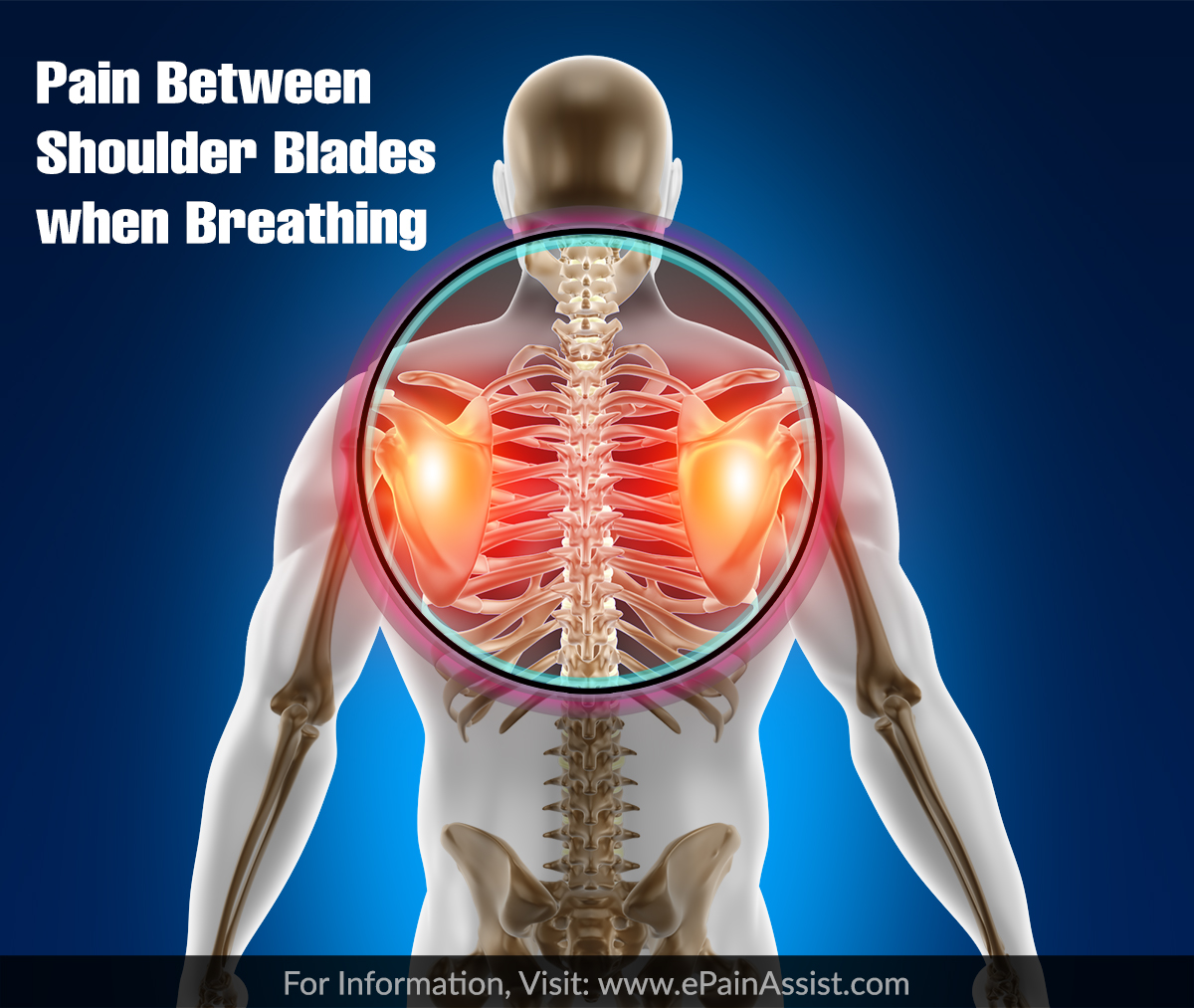What Causes Pain between Shoulder Blades When Breathing?

The Following Pathologies May Be Probable Causes Of This Condition:
Heart Attack
The typical clinical presentation of acute coronary syndromes is the retrosternal (part of the chest above the diaphragm) pressure radiating to the left side, neck or jaw that can be intermittent (usually lasts several minutes) or persistent.
This type of ailment is accompanied by other symptoms such as diaphoresis (sweating), nausea, abdominal pain, dyspnea (respiratory distress) and syncope. However, some atypical clinical presentations are not infrequent, these are painful epigastric symptoms, recent onset indigestion, transfixing chest pain, pleuritic pain (pain in the chest during inspiration, it can even radiate to the interscapular area –between the shoulder blades-) or increasing dyspnea.
Atypical symptoms are seen mostly in elderly patients, women and diabetics. The absence of chest pain can lead to not diagnosing the disease or insufficient treatment. Tachycardia, hypotension (low blood pressure) and heart failure during presentation indicate a poor prognosis and require urgent care.
Pulmonary Embolism
Venous thromboembolic disease (VTE) involves deep vein thrombosis (DVT) and pulmonary thromboembolism (PE) and complicates patients of all ages, especially postoperative, oncological and pregnant.
PE is the third cause of cardiovascular death, after coronary heart disease and cerebrovascular accidents (better known as strokes). It is not a disease that can be diagnosed or excluded with certainty without the help of high-cost imaging studies, which requires the incorporation of cost-effective coping strategies. The analysis should always start with the clinical probability of the DVT/PET diagnosis, based on the risk factors present: history of previous VTE, advanced age (70 years), active cancer (especially lung, pancreas, colorectal, kidney and prostate), poor mobility due to trauma or recent surgery, neurological damage or use of immobilization splints, prolonged travel, carriers of intravenous catheters, pregnancy, oral contraceptives or hormone replacement therapy with estrogen, obesity, acquired thrombophilias (mutation of factor V Leiden or gene of prothrombin and protein S, C or antithrombin deficiencies), antiphospholipid syndrome, congestive heart failure, inflammatory bowel disease, nephrotic syndrome, hyperhomocysteinemia, polycythemia vera, essential thrombocytosis or paroxysmal nocturnal hemoglobinuria.
Of all the proximal DVTs of the lower extremities, 50% embolize the lung, often asymptomatically (without symptoms). The symptoms that are most frequently associated with PE are dyspnea, pleuritic chest pain, hemoptysis (bloody expectoration), syncope and cough. Patients may present tachypnea, tachycardia and hypotension (these medical terms refer to high respiration rate and pulse rate but low blood pressure).
Aortic Dissection
An aortic dissection is a serious disease in which the inner layer of the aorta, which is the large blood vessel branching out of the heart, is torn. The blood is expelled through the tear, which causes the inner layer and middle layers of the aorta to separate (dissection). If the blood-filled canal ruptures and passes through the outer wall of the aorta, aortic dissection is usually fatal.
Aortic dissection is relatively rare. In general, it happens to men between 60 and 70 years old. The symptoms of aortic dissection may be similar to those of other diseases, which is to delay diagnosis.
However, when aortic dissection is detected early and treated immediately, the chances of survival improve greatly.
Typical Signs And Symptoms Include The Following:
Severe, sudden pain in the chest or upper back, which is often described as a lacerating, tearing, or shearing sensation that extends to the neck or back, severe and sudden abdominal pain, loss of consciousness, shortness of breath, sudden difficulty in speaking, loss of vision, weakness or paralysis of one side of the body, resembling those of a stroke, weak pulse in one arm or in one thigh compared to the other, leg ache, difficulty to walk, and paralysis in the legs.
Conclusion
Pain between shoulder blades is a discomfort sensation that patients who suffer from back pain may experience, but when it is also associated with breathing, many other diseases are involved as it was described. These particular conditions are very serious or even fatal, if they are treated in an emergency room.
- Mayo Clinic. (2021). Heart Attack. Mayo Clinic https://www.mayoclinic.org/diseases-conditions/heart-attack/symptoms-causes/syc-20373106
- American Heart Association. (2021). Warning Signs of a Heart Attack https://www.heart.org/en/health-topics/heart-attack/warning-signs-of-a-heart-attack
- National Heart, Lung, and Blood Institute. (2021). What Is Pulmonary Embolism? https://www.nhlbi.nih.gov/health-topics/pulmonary-embolism
- Cleveland Clinic. (2021). Aortic Dissection https://my.clevelandclinic.org/health/diseases/17710-aortic-dissection
Also Read:
